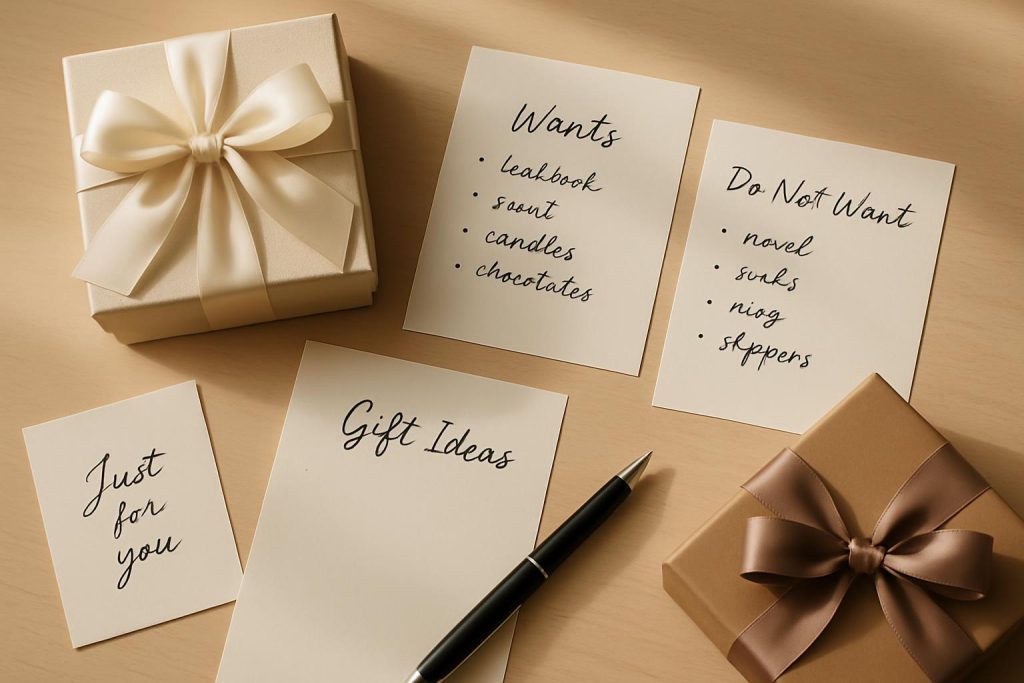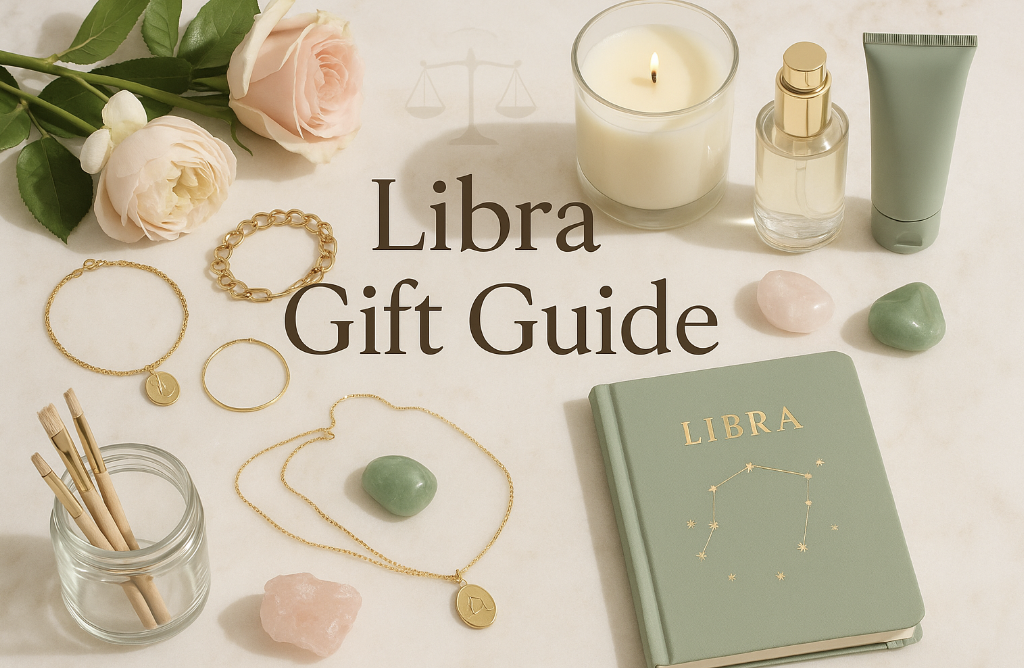Over the years, we’ve come to realize that most people worry more about choosing the ideal gift for their family, friends, guests, or the host of an event, but care less about what the person might not want to receive. No Thanks Lists, also known as anti-wish lists, can describe an individual’s personality, comprising a broad list of things, food, products, activities, and habits that they want to refrain from and wouldn’t accept from anyone likewise. Thus, they’ll have to show gratitude for the gift while also emphatically declining it.
At PickItPerfect, we consider it our responsibility to help you understand No Thanks Lists and why it’s essential for anyone looking to present gifts that the recipient will truly appreciate. When a person shows you a list of items they are unwilling to receive as gifts, they’re providing critical information about their lifestyle, choices, and personality in a very clear and concise manner.
Unlike traditional wish lists, which social norms and the gift-giver can influence, No Thanks Lists focuses on the human nature aspects from the recipient’s perspective, providing a unique way to stick to a specific principle and set clear boundaries regarding things they want to avoid at all costs.
The Psychology Behind No Thanks Lists
No Thanks Lists is more than personal preferences, but a way of representing one’s personality, views, and interests when it comes to gift sharing. Creating these lists helps explore human behavior and relationship dynamics. It also means understanding their own needs and lifestyle constraints, using this to define what they want and what they would never accept for any reason.
These lists also serve as a way of setting boundaries in relationships, letting people know specific items or categories of gifts that you would always refuse. For most people, items like revealing dresses (for women) or tight clothes (for men), cheap jewelry, perfumes with strong scents, books, and food often appear on No Thanks Lists.
Let’s take a look at this: A person might want to present a mug to someone who dislikes coffee and doesn’t take tea as well. The recipient might not want to reject the gift, especially if they adore you or hold you in high esteem. Instead, they’ll accept it but never use it, ending up dusty in their cupboards or even in the trash. In only a few cases will the recipient consider presenting the gift to another person.

Creating a No Thanks List also shows respect for anyone who wants to present you with a gift, guiding them toward choosing the right items, prioritizing personalization over choices. It helps strike a balance between the giver’s intentions to express affections and gratitude by sharing gifts and the recipient’s specific needs. List creators provide guidance on choosing more meaningful gifts that will always be people’s choice.
What Common No Thanks List Items Reveal
People have different reasons for adding specific items to their No Thanks Lists. For sugary items like cakes, cookies, and sweets, the person might have diabetes and be on strict lifestyle management. So, gifting them eatables like these will most likely end up in the trash or donations.
Clothing and other fashion items also appear on No Thanks Lists for many justifiable reasons. Except you’re very close to the recipient, it can be very difficult to tell their size, style preferences, or quality standards. For instance, many people feel discomfort in clothes made of nylon or polyester. Some people also dislike perfumes and prefer to use body sprays or roll-on deodorants. They probably won’t change their preference because you gave them such items as gifts.
Consumer electronics and gadgets like smartphones, computers, video games, and Apple Airpods Pro may also appear on some people’s No Thanks Lists for personal reasons. Some people prefer Android mobile devices to iPhones, and the same holds for those who prefer playing video games on an Xbox rather than a PlayStation console. Computers might also make a great gift, but most people already have one and wouldn’t want to take the time to transfer their files to a new one, except it’s a high-end laptop, such as the Apple MacBook Pro M4 or an ASUS ROG gaming laptop.
For women, whether single or married, their choices also vary greatly, like those for other items. Let’s talk about the Instant Pot Duo 7-In-1 Electric Pressure Cooker on Amazon. Despite its modern features, diverse usability, and affordable price, some women consider it a counter clutter and never want it in their kitchen.
Reading Between the Lines: Deeper Insights
There are several key points to note in the items outlined in No Thanks Lists. One of them is the mode of expression. Statements like “no more (item’s name)” might imply that they already have plenty of them. So, if you insist on giving them such items, make sure it’s a premium one that they can’t resist.
To better understand the recipient’s personality type, look out for the length and the details of their listing. A well-detailed and extensive one might show that the person wants to ensure a perfect understanding and prevent misinterpretations. A brief, generic No Thanks List might mean that the person doesn’t want to appear over-demanding or materialistic.

It’s equally important to know that cultural factors, such as age, religion, social norms, and language, can also influence the content of a No Thanks List. Gen Z and Millennials might not consider physical media and older-generation tech gadgets, such as the PS4, Xbox 360, or a standard notebook computer, as ideal gifts.
Using No Thanks Lists to Strengthen Relationships
Respecting people’s ‘no thanks’ lists means you understand their emotions and want to foster a long-term connection with them. When you gift them based on their clearly stated guidelines, you’re showing them that you care about their personal choices, value their comfort, and are gifting them to make them happy rather than as a present.
For instance, if a person states no book gifts on their No Thanks List, but you’re sure they love reading. Instead of getting them novels and hard-copy books, opt for an Audible Premium Plus subscription or a MasterClass Membership for any skill they’d love. This allows them to learn digitally without holding books, which can take a lot of time to turn pages.
Understanding the reason behind creating No Thanks Lists allows you to identify the best alternatives to unwanted gift items. If someone dislikes a specific gift, first try to know why they rejected it and look for something else to show care and thoughtfulness.
Understanding the reasoning behind No Thanks Lists items helps identify suitable alternatives. If someone rejects kitchen gadgets due to space constraints, consider consumable food gifts or cooking class experiences. When clothing is declined due to sizing concerns, accessories or gift cards to their favorite stores provide choice while showing thoughtfulness.
The Art of Thoughtful Alternative Gift-Giving
If you’re thinking of sharing gifts, you need to work with the recipient’s No Thanks Lists, which requires demonstrating your problem-solving and critical thinking skills. Make sure you understand their underlying needs and preferences, using gifts to satisfy them rather than finding loopholes in their boundaries.
Allowing people to have new adventures and experiences can make a huge difference compared to giving physical items that they may never unbox, let alone use. We recommend booking their favourite concerts and enrolling in professional skills development classes on their behalf. The Virgin Experience Gifts platform is your go-to for booking practically any fun activity or experience.
If you’ve decided to gift consumables, the Harry & David Gourmet Gift Baskets contain many edibles that most people can’t refuse. You can also buy gift cards from TaskRabbit to pay for specific services, such as home cleaning. If the recipient is a Gen Zer, millennial, or an introvert, they might like to stream, which requires a Netflix Gift Card or a Spotify Premium subscription.
Building Better Communication Around Gift Preferences
A No Thanks List may require open communication between the giver and recipient regarding preferences and interests, facilitating healthier relationships. For most people, explicitly stating what they don’t want as gifts seems demanding or ungrateful, so they would rather stay silent and accept whatever gift they’re offered, even if they don’t need it.
To discuss your gifting preference with someone, you can simply say, “I would love to help you choose something I use often and better”. Hence, the way of expression significantly determines how the giver would feel about your opinions and whether they’d still be willing to buy you a gift.
Consider starting these conversations at the appropriate time, so your preferences and opinions are perfectly understood and accepted. The conversation could also lead to a reciprocal sharing of preferences, resulting in a better understanding between the two of you.
The Future of Thoughtful Gift-Giving
No Thanks Lists will likely become adopted in the coming years. It will be regarded as a social norm, valuing relationships over traditions. Respecting people’s needs concerning gift sharing is what makes you a thoughtful gift-giver and will position you better in the recipient’s heart.
Modern gift-sharing will prioritize quality over quantity, experiences over physical items, and personalization over choices. PickItPerfect.com is at the forefront of these innovations, helping people give and receive better gifts through improved communication and understanding.
Conclusion: Embracing the Wisdom of No Thanks Lists
No Thanks Lists offer a mature approach to gift-sharing, prioritizing the recipient’s choice over your budget and personal preference. It considers gifting a way to enhance happiness and connection between people rather than performing a duty or responsibility.
Whenever someone shares their No Thanks List with you, do well to present a gift based on their preferences and interests, as outlined in it. You could consider the list a gift itself, allowing you to present something that revolves around their needs, is worth keeping, and will be remembered for a lifetime. If the recipient seems difficult to approach for a No Thanks List, you can examine their lifestyle and interests to offer a gift they can’t refuse. Overall, No Thanks Lists fosters deeper, stronger relationships with people.
At PickItPerfect.com, we encourage people to create their own ‘No Thanks’ Lists and understand the psychology behind someone sharing theirs with you. When we strictly follow the guidelines these lists entail, we open doors to better relationships with people, as we share thoughtful, valuable, and essential items as gifts. This gives the impression that we not only love and care for them, but also feel concerned about their needs and would help to satisfy them.





